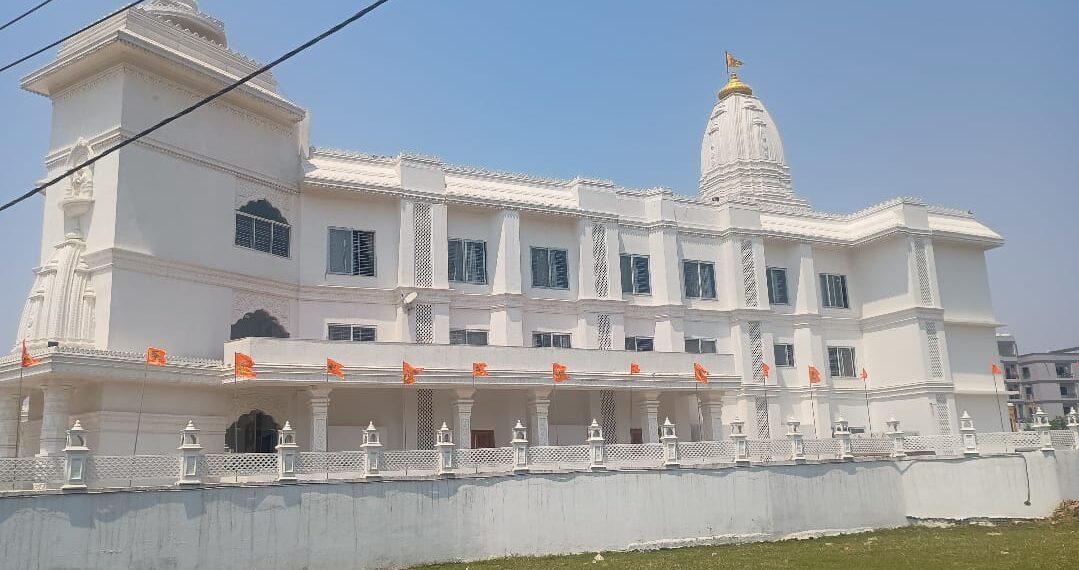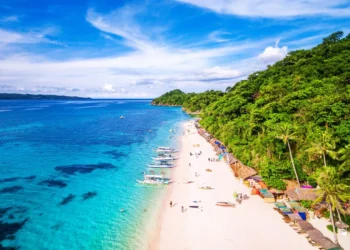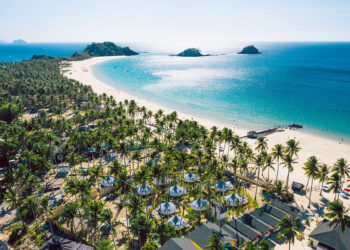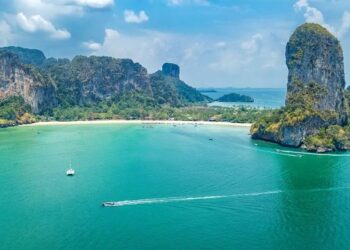Radha Krishna Mandir, also known as Vanshidhar Mandir, situated in the vibrant heart of Shree Banshidhar Nagar, Garhwa district, Jharkhand, is a sacred shrine of worship dedicated to Lord Krishna and Radha, revered as divine lovers. Established in 1885, this temple is famed for its centuries-old gold idols, said to weigh 1280 kg (32 maunds), and its hilltop Shiva shrine, Raja Pahari. Its serene surroundings, near the Kanhar River, draws devotees seeking Krishna’s grace and blessings.
Interesting Fact: The temple’s 1280 kg gold Krishna idol, found on Mahuaria mountain and paired with a Radha idol from Kashi, was installed before the temple’s construction in 1885, a rare feat that marks it as a historic marvel.
Overview of Radha Krishna Mandir
Radha Krishna Mandir, in Shree Banshidhar Nagar (formerly Nagar Untari), 40 km west of Garhwa, is one of the prime Hindu pilgrimage site for Vaishnavism. Known for its gold Radha-Krishna idols, the 2-acre complex includes a Raja Pahari Shiva shrine atop a hill. Devotees offer tulsi leaves, mishri, and ghee laddus, believing Krishna fulfills vows. Managed by a trust since 1885, it hosts 10,000–20,000 visitors during festivals, with a grand Banshidhar Mahotsav yearly. A sacred hub, it shines in Jharkhand’s cultural landscape, near Bihar, Uttar Pradesh, and Chhattisgarh borders.
History of Radha Krishna Mandir
Records convey the temple’s founding in 1885 by Rani Shivmani Kuvar, wife of King Bhawani Singh of Attari state, per local legend. A pious Krishna devotee, Shivmani, childless and widowed, dreamt of Krishna revealing a gold idol on Mahuaria mountain. Found there, the idol was carried by elephant but halted outside her palace, leading to its installation there. A Radha idol, crafted in Kashi from Ashta Dhatu (eight metals), joined it, and the temple was built around them. It draws 50,000 during Janmashtami, per Prabhat Khabar. The trust renovated it in 2010, adding a courtyard.
Architecture of Radha Krishna Mandir
Radha Krishna Mandir, set on a 2-acre plot in Shree Banshidhar Nagar, follows a North Indian style with a 20-foot spire topped by a golden kalash. The main shrine, 8 meters by 8 meters, built of sandstone, houses 3-foot gold Radha-Krishna idols. The Raja Pahari Shiva shrine, 4 meters by 4 meters, 200 meters uphill, holds a 2-foot linga. A courtyard, 15 meters by 10 meters, displays mantras and aartis on its walls. A pond, 10 meters by 8 meters, lies 50 meters east for rituals. The entrance, a 5-meter-wide arch, bears floral carvings. The tiled yard, 1000 square meters, holds 3000 devotees, accessible by foot or car.
Sculptures of Radha Krishna Mandir
The temple’s Sanctum Sanctorum houses the 3-foot Krishna idol, gold, flute-playing, beside a 3-foot Radha idol, Ashta Dhatu, holding a lotus. The Shiva linga, 2 feet tall, black stone, is plain. The courtyard walls bear 15 carved panels, 0.8 meters by 0.4 meters, showing Krishna’s leelas and Shiva’s tales, painted blue and gold. The entrance arch, 5 meters wide, has two floral carvings. A small Hanuman idol, 2 feet tall, red sandstone, stands near the Shiva shrine. No older relics exist, but the 1885 gold idols, crafted with royal skill, shine bright, per Garhwa’s official site.
Information for Travelers
How to Reach Radha Krishna Mandir, Nagar Untari
In Shree Banshidhar Nagar, 40 km from Garhwa, the temple is reached by bus, taxi, or auto, set near the Kanhar River.
By Air
Varanasi Airport, 140 km away, connects to Delhi (2 hours), Kolkata (1.5 hours), Mumbai (2 hours). Taxis take 3 hours. Birsa Munda Airport, Ranchi, 212 km, takes 5 hours.
By Train
Shree Banshidhar Nagar Station (formerly Nagar Untari), 12 km away, links to Garhwa (39 km, 1 hour), Kolkata (8 hours). Mehuria Station, 3 km away, is closer. Autos take 15–30 minutes.
By Road
Shree Banshidhar Nagar connects to Garhwa (40 km, 1 hour), Ranchi (212 km, 5 hours), Patna (221 km, 5 hours) via NH-39. State buses cost ₹50–150; private buses run hourly. Taxis cost ₹1000–2000.
Hours and Entry
Open daily, 6:00 AM–9:00 PM. Free entry; puja costs ₹50–300. No photography in the sanctum. Wear clothing covering shoulders and knees; women wear sarees or suits, men wear kurtas or dhotis. Dharamshalas offer rooms for ₹200–500.
Best Time to Visit
October to March, temperatures 14–25°C, suits visits. Weekdays see 2000 visitors; weekends, 5000. Janmashtami (August) and Banshidhar Mahotsav (varies) draw 50,000; visit early. Avoid April–June, 25–40°C, or monsoons for muddy roads.
Nearby Attractions
Raja Pahari, 200 meters, hilltop Shiva temple.
Sukhaldari Waterfall, 20 km, Makar Sankranti festival spot.
Parasdih Waterfall, 25 km, scenic cascade.
Garhdevi Mandir, 30 km, ancient goddess shrine.
Catholic Ashram, 35 km in Kanjia, built in 1937.
Final Thoughts
Radha Krishna Mandir in Shree Banshidhar Nagar, Jharkhand, is a sacred heritage in India’s heart. Lord Krishna’s golden grace, cradled by royal devotion, touches them who come, making it a place you must see among India’s holy spots for those travelling to the state.











